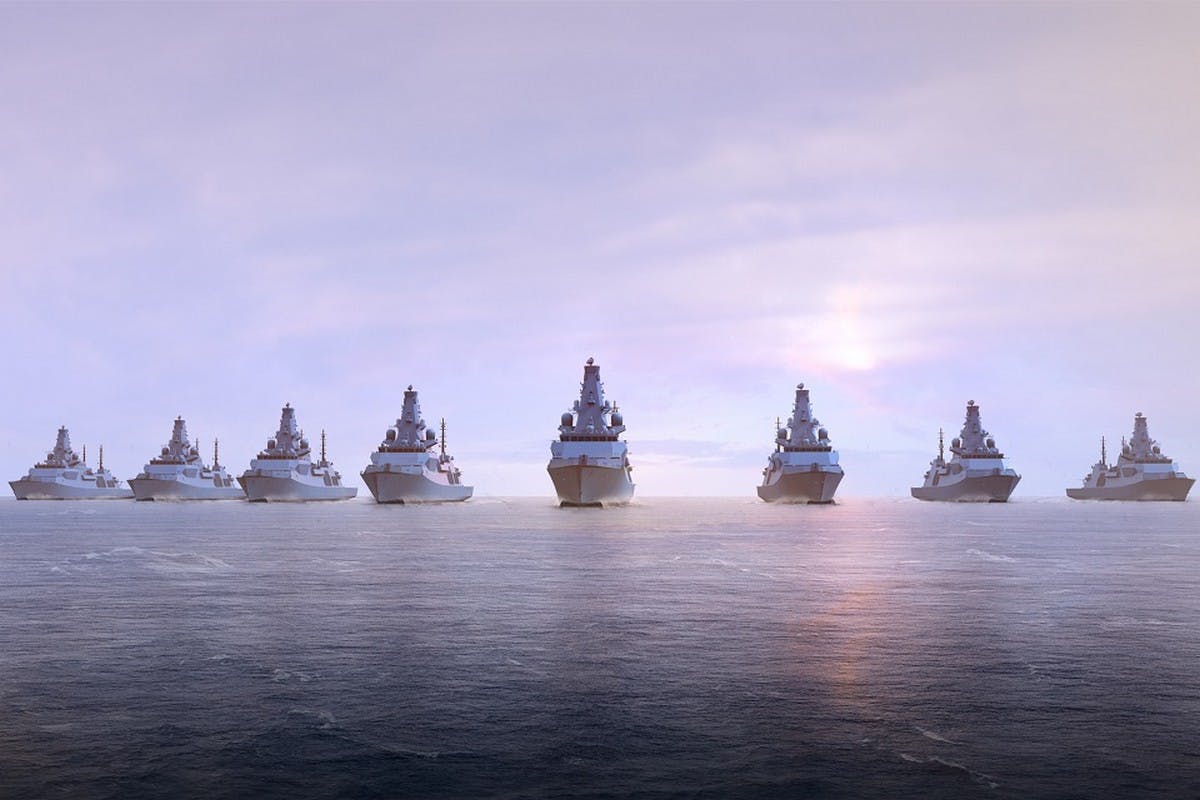In a recent report, experts discuss the necessity for the Royal Navy to bolster its frigate force to address current and future maritime challenges.
The report, ‘A More Lethal Royal Navy: Sharpening Britain’s Naval Power‘ by William Freer and Dr. Emma Salisbury, outlines the current state of the Royal Navy’s frigate fleet and offers key recommendations to enhance its capabilities.
The Royal Navy’s frigate force has dwindled to precariously low levels but is expected to see a modest resurgence by the early 2030s. The Type 23 frigate, serving as the workhorse of the Royal Navy for three decades, is aging and heavily overworked. The report states, “While one of the best general-purpose frigate designs of their time, they are ageing – and have been heavily overworked.”
The current plan involves a mixed fleet of high-end and lower-end warships. This will include eight advanced Anti-Submarine Warfare (ASW) Type 26 frigates, five less capable but still potent Type 31 frigates, and possibly five Type 32 frigates. The Type 32 design is yet to be finalised but is expected to be a more autonomous version of the Type 31. This strategy aims to provide a total frigate force of 18 warships.
These new frigates will offer a balance between hull numbers, lethality, and survivability. The report notes, “The Type 26 class will carry 48 VLS cells for Sea Ceptor and 24 cells of Mk41, for a total of 72 cells.” The Type 31 class, initially planned to carry only eight Sea Ceptor cells, will now be equipped with 32 Mk41 cells, significantly enhancing its capabilities.
The Type 32, described as a “Type 31 Batch 2,” may also feature 32 Mk41 cells. The Royal Navy’s approach to rebuilding the frigate force is commendable and by the mid-2030s will see a larger and more capable fleet.
Recommendations
Additional Type 26 Frigates
The report recommends procuring two additional Type 26 class frigates, increasing the total order to ten vessels. “Russia and the PRC are both placing heavy emphasis on their submarine fleets and ASW frigates will be in higher demand in the coming years,” the report explains.
Integration of ASROC
To amplify the ASW capabilities of the Type 26 class, the report suggests integrating the Anti-Submarine Rocket (ASROC) system. The report states, “ASROC is Mk41 VLS compatible and will amplify the Type 26 class’ already potent ASW capabilities.” This integration would ensure that the Type 26 can engage submarines at a range of around 10 miles, even if its helicopter is inoperable.
“The Type 26 is already set to become the world’s leading submarine hunting warship – integrating ASROC will turn it into an even more lethal submarine killer.”
It’s important to note that after the report was published, thinking went down this route.
Maintaining Type 31 Capabilities in Type 32 Design
The report emphasises that the Type 32 class design should not see a reduction in the capabilities of the Type 31 design. It asserts, “Ensure that Type 32 class frigate design – as a ‘Type 31 Batch 2’ – does not see a reduction in the capabilities of the Type 31 design.”
Additional Type 32 Frigates
To enhance operational flexibility and coverage, the report recommends procuring an additional four Type 32 frigates, bringing the total to nine. The report states, “Procure an additional four Type 32 frigates, taking the total order to 9 vessels. Warships can only be in one place at any given time and a larger number of warships will amplify and extend the Royal Navy’s ability to protect British interests.”
Enhancing Offensive Firepower
The report suggests fitting both the Type 31 and Type 32 class frigates with eight canisters for surface-to-surface missiles to boost their offensive capabilities. It advises, “Fit the Type 31 and Type 32 class frigates – designed ‘for but not with’ – with eight canisters for surface-to-surface missiles to amplify their offensive firepower.”
Options include transferring Naval Strike Missiles from the retiring Type 23 class or procuring new canisters for the Future Cruise/Anti-Ship Weapon (FC/ASW) or other weapons such as the Long-Range Anti-Ship Weapon (LRASM).
Improved ASW Detection
Finally, the report recommends amplifying systems for submarine detection. It suggests, “Bolstering the effort could come through ensuring investment into the Merlin helicopter life-extension programme and exploring how long-range drones, able to operate across multiple platforms, can contribute to ASW.”

